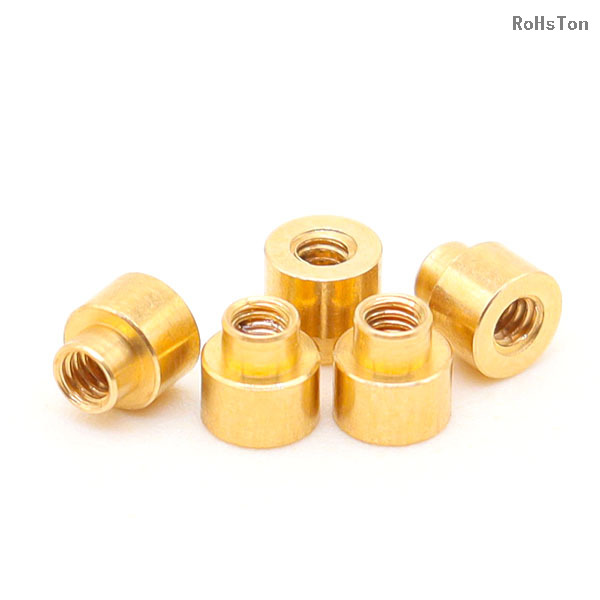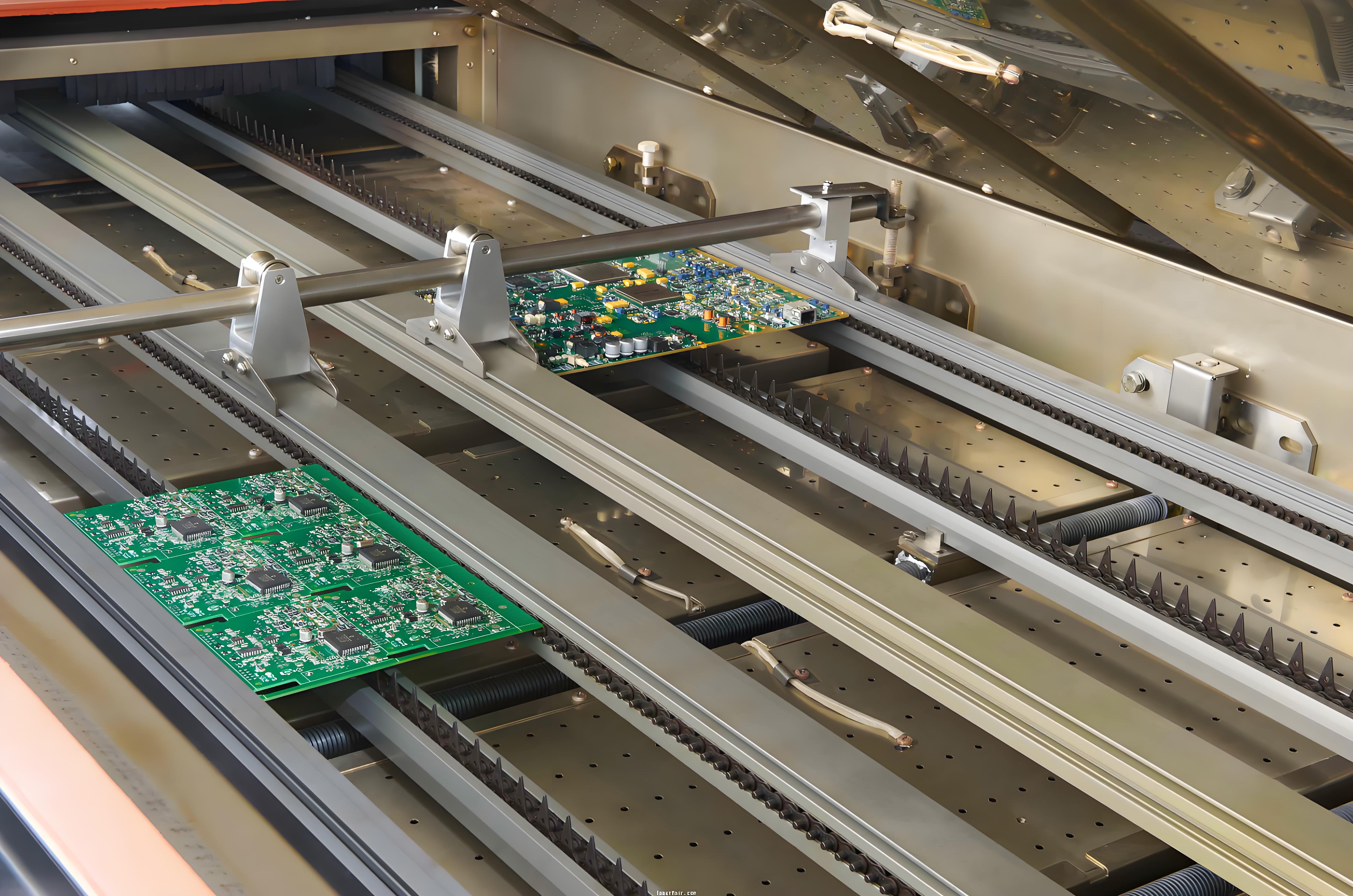In the fast-paced, automated world of electronics manufacturing, SMT Patch Nuts (also known as SMT Nuts or Surface Mount Nuts) are indispensable, specialized fasteners. Designed explicitly for Surface Mount Technology (SMT), these nuts are applied directly to the surface of Printed Circuit Boards (PCBs) during the assembly process, eliminating the need for through-holes and manual insertion. They provide robust, threaded anchor points for screws, bolts, or studs, enabling secure mechanical connections within compact electronic devices.
Core Characteristics:
Miniaturized & Lightweight: Ideal for high-density PCB layouts found in smartphones, laptops, wearables, and IoT devices.
SMT Compatible: Features solder pads on its base, allowing automated placement and soldering alongside other SMD components.
Secure Fastening: Creates a strong, threaded connection point directly on the PCB surface.
Stable Attachment: Bonded firmly via reflow soldering, offering excellent mechanical stability and vibration resistance.
Design Variety: Available in multiple shapes (round, square, hexagonal), thread sizes, heights, and configurations.
Corrosion Resistant: Surface finishes (like tin, silver, or gold plating) enhance solderability and environmental protection.
Classification of SMT Patch Nuts (Primary by Material):
SMT nuts are fundamentally categorized by their base material, which dictates their core properties and applications:
Brass SMT Patch Nuts (Often designated SMTSOB):

Excellent Corrosion Resistance: Naturally resistant to oxidation and many chemicals, crucial for harsh environments or long-term reliability.
Good Electrical Conductivity: Beneficial for grounding applications.
Good Machinability & Formability: Allows for precise threading and complex shapes.
Non-Magnetic: Essential in applications sensitive to magnetic fields (e.g., certain sensors, RF circuits).
Material: Copper-Zinc alloy.
Key Properties:
Typical Finishes: Tin (Sn), Silver (Ag), Gold (Au) plating for enhanced solderability and protection.
Common Applications: Consumer electronics, telecom equipment, medical devices, general PCB mounting where corrosion resistance and non-magnetic properties are priorities.
Carbon Steel SMT Patch Nuts (Often designated SMTSO):

High Strength & Hardness: Provides superior resistance to stripping, deformation, and higher clamping loads compared to brass.
Cost-Effective: Generally less expensive than brass nuts.
Magnetic: Can be a consideration in specific designs.
Requires Protective Coating: Prone to rust without surface treatment.
Material: Iron-Carbon alloy.
Key Properties:
Typical Finishes: Zinc plating (Zn), Nickel plating (Ni), or Tin plating (Sn) are essential for corrosion protection and solderability.
Common Applications: Industrial controls, automotive electronics, power supplies, applications requiring higher mechanical strength or where cost sensitivity is a factor. Often used with accompanying washers or under higher torque conditions.
Additional Classification Factors:
Shape: Hexagonal (best torque resistance), Square (good anti-rotation), Round (space-constrained), Flanged (increased stability, locating pins possible).
Base Features: Standard pads, Locating Pins/Posts (precise alignment, anti-rotation), Solder Tabs/Clips (stronger mechanical interlock).
Thread Type: Metric (M2, M2.5, M3, etc.) or Imperial (e.g., 4-40, 6-32).
Installation Method:
SMT nuts leverage standard, highly automated SMT processes:
Solder Paste Application: Solder paste is stencil-printed onto the PCB pads designed for the nut's footprint.
Component Placement: An automated SMT pick-and-place machine precisely positions the nut onto the solder paste deposits. Manual placement is only for prototypes or repair.
Reflow Soldering: The PCB travels through a reflow oven. The solder paste melts, wets the PCB pads and the nut's solderable surfaces (base, pins, tabs), and upon cooling, forms solid solder joints that mechanically and metallurgically bond the nut to the PCB.

Working Principle:
The SMT nut functions as a surface-mounted threaded anchor:
Mechanical Bonding: Reflow soldering creates a robust connection between the nut's base/pins/tabs and the PCB's copper pads, resisting pull-off and rotation forces.
Threaded Interface: A screw, bolt, or stud is threaded into the nut from the side opposite the PCB (the side without the nut body).
Force Transfer: Tightening the fastener creates a clamping force. This force is transferred through the nut's body into the PCB via the solder joints and any mechanical features (pins, tabs, flange), securing the fastened item (heatsink, shield, bracket, another PCB) firmly.
Key Functions & Roles:
PCB Mounting: Securing the PCB within enclosures or to chassis/frames.
Component Attachment: Mounting heatsinks, EMI/RFI shields, connectors, sensors, displays, or modules directly onto the PCB.
Board-to-Board / Board-to-Panel Connection: Enabling mechanical stacking of PCBs or attachment to panels using standoffs and screws.
Mechanical Reinforcement: Strengthening PCB areas under stress (e.g., connector zones).
Grounding/Shielding: Flanged nuts soldered to ground planes improve grounding paths for shields or connectors.
Heat Transfer: Metal nuts (under heatsinks) can contribute marginally to thermal pathways.
Specific Application Scenarios:
Consumer Electronics: Securing PCBs in phones/tablets/laptops; attaching cameras, vibration motors. (Often uses Brass/SMTSOB).
Telecom/Networking: Mounting PCBs in routers/switches; securing RF shields/heatsinks. (Brass common for corrosion/non-mag, Steel/SMTSO for strength).
Automotive Electronics: Fastening PCBs in ECUs, infotainment, sensors (vibration resistance critical). (Steel/SMTSO often used for strength, Brass/SMTSOB where corrosion/non-mag is key).
Industrial Control: Mounting PCBs in PLCs, HMIs, drives; attaching heavy connectors. (Steel/SMTSO frequently chosen for high strength).
Medical Devices: Securing PCBs in diagnostic/monitoring equipment (reliability paramount). (Often Brass/SMTSOB for corrosion resistance).
Aerospace & Defense: Avionics and critical systems (weight, reliability under extremes). (Material choice depends on specific strength, weight, and environmental needs).

Conclusion:
The SMT patch nut is a cornerstone of efficient, automated electronics assembly. Its ability to provide a durable, threaded mounting point directly on the PCB surface through standard SMT processes is invaluable. The fundamental choice between Brass (SMTSOB - corrosion resistant, non-magnetic) and Carbon Steel (SMTSO - high strength, cost-effective) dictates its suitability for diverse application environments and mechanical demands. By enabling reliable, miniaturized mechanical fastening, SMT nuts are essential for the structural integrity, functionality, and mass production of virtually all modern electronic devices, from everyday gadgets to complex industrial and aerospace systems. Their ongoing development continues to meet the evolving needs for smaller sizes, enhanced performance, and seamless integration.
















